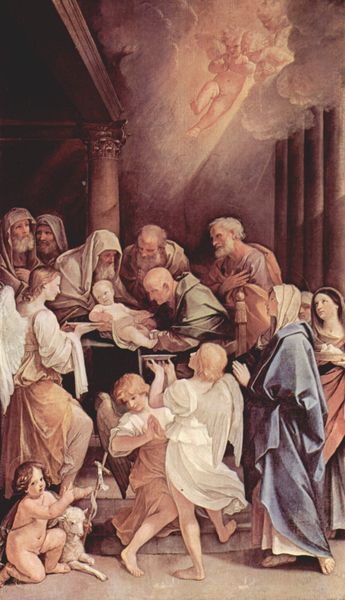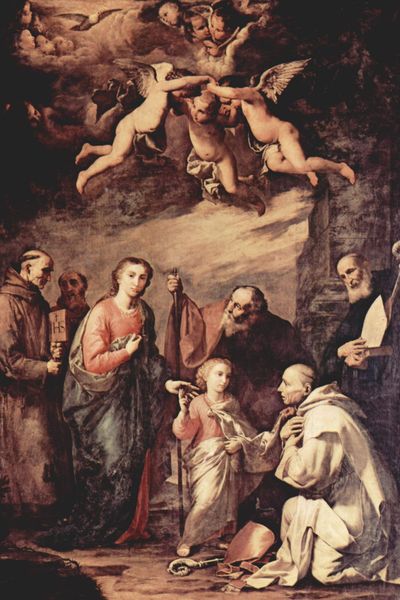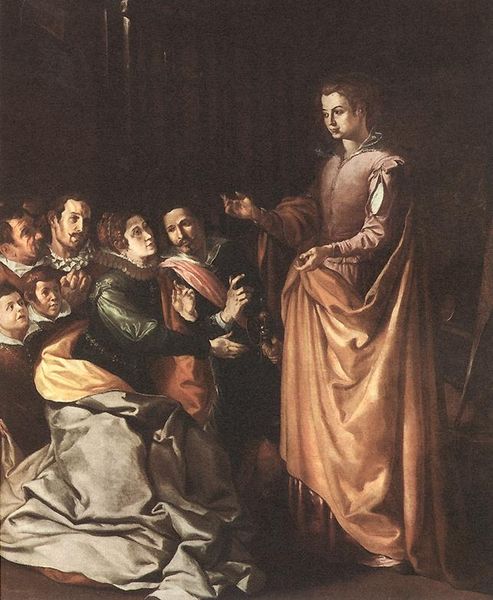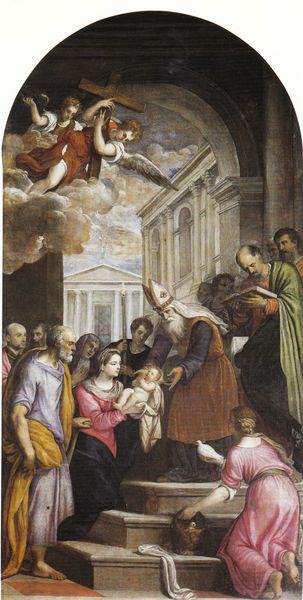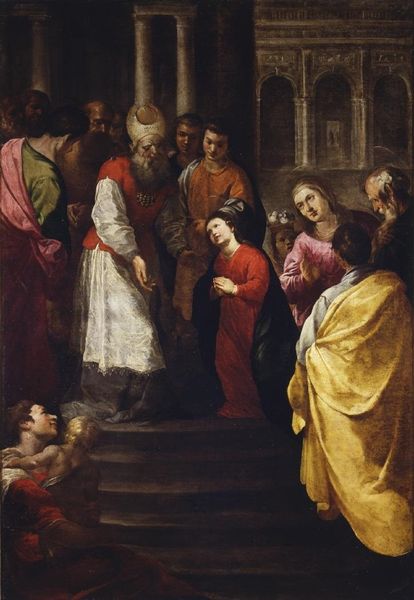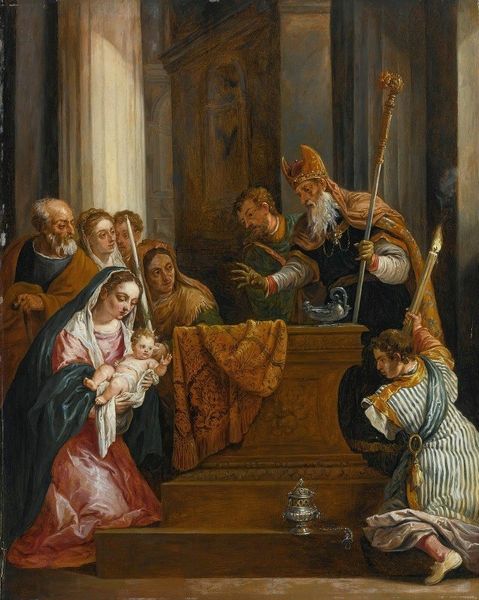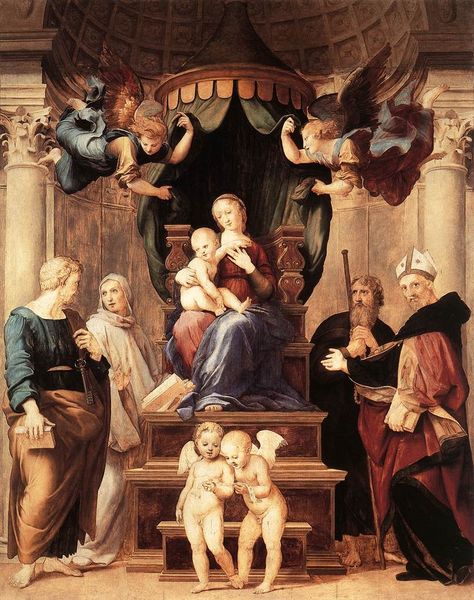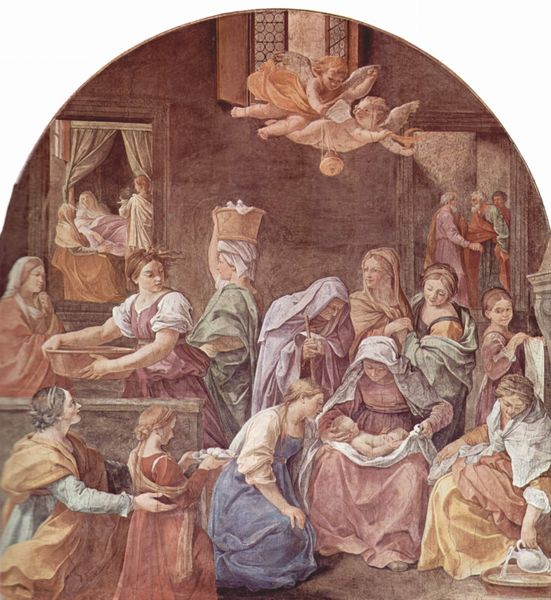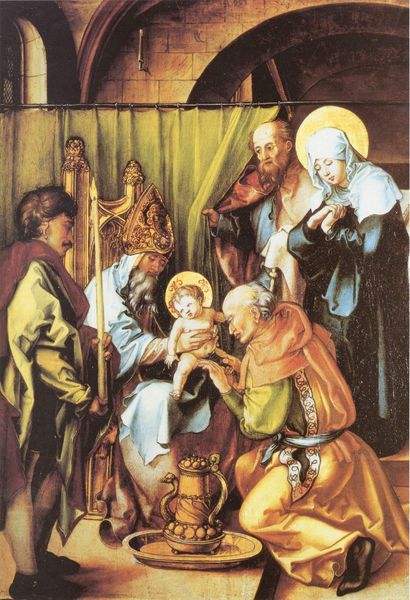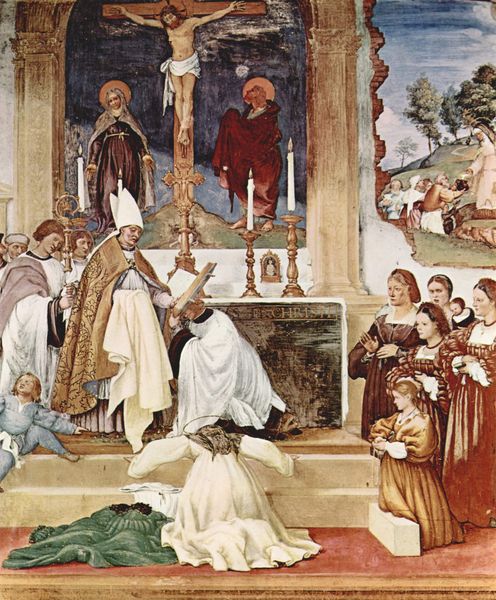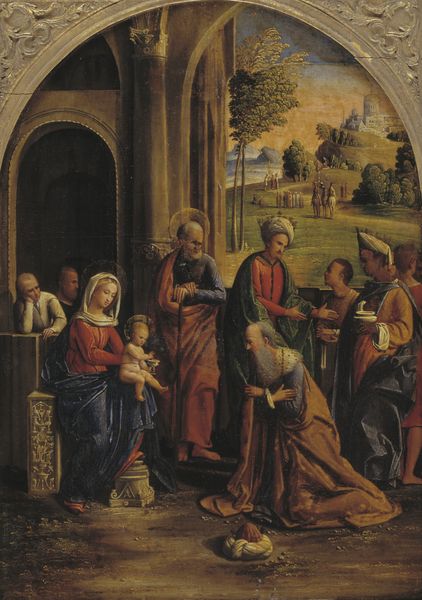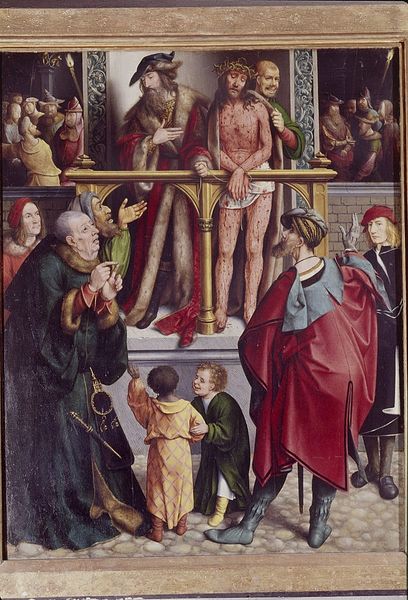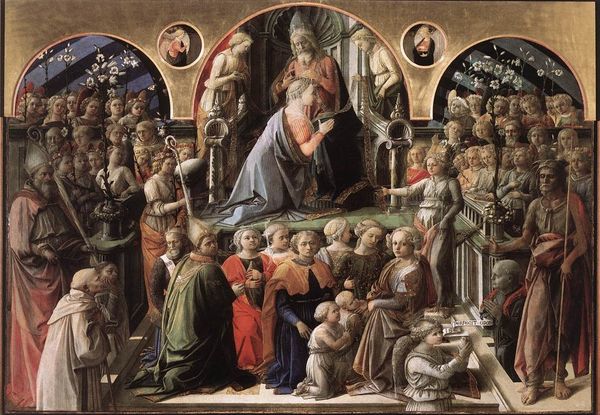
#
sculpture
#
possibly oil pastel
#
oil painting
#
neo expressionist
#
child
#
underpainting
#
christianity
#
men
#
green and neutral
#
portrait art
#
fine art portrait
#
celebrity portrait
#
christ
#
digital portrait
Dimensions: 286 x 201 cm
Copyright: Public domain
Curator: Here we have Guido Reni’s “The Purification of the Virgin,” painted around 1640. It's currently held at the Louvre in Paris. My initial impression is how serene yet somewhat staged it feels. Editor: Staged is a good word for it. I sense a powerful visual drama being played out; a ceremony of tradition. Look at the careful placement of each figure. The Virgin Mary takes center stage as her child is handed to the high priest. Can you say more about that tradition? Curator: Well, the Purification is described in the Gospel of Luke, specifically referring to the presentation of Jesus at the Temple in Jerusalem. The ritualistic aspect, found within early Judaism, holds symbolic meaning related to purity, consecration, and adherence to ancient laws. The setting is interesting; the column details look distinctly like a neoclassical, almost Roman building, rather than a Jewish temple. What are your thoughts on the spatial elements, and the emotional setting? Editor: The architectural ambiguity underscores the painting's bridging of different eras and belief systems, as Christian beliefs began replacing old Roman rule. There's a somber mood created by the subdued colors, mostly muted browns and greys, with small muted pops of the virgin’s dress. Note the gestures, how each hand tells a story. It reflects the societal norms regarding women within the Catholic Church. It has a sort of passive resignation or willing compliance. Curator: It’s definitely a scene charged with historical weight. The offering of the doves on the lower right by one of the women can easily be seen as another visual symbol— sacrifice— in exchange for faith, devotion. The visual symbol is both direct and deeply allegorical. How might viewers respond to this today, I wonder? Editor: Today, audiences might question these social structures; challenge these readings; they might also be touched by Mary’s vulnerability or be simply left thinking about the politics embedded in this powerful historical and religious scene. Art allows us to rethink our values. Curator: Absolutely, art can provide an endless bridge from the past to our own modern values, inviting introspection. Thank you. Editor: Thanks to you.
Comments
No comments
Be the first to comment and join the conversation on the ultimate creative platform.
